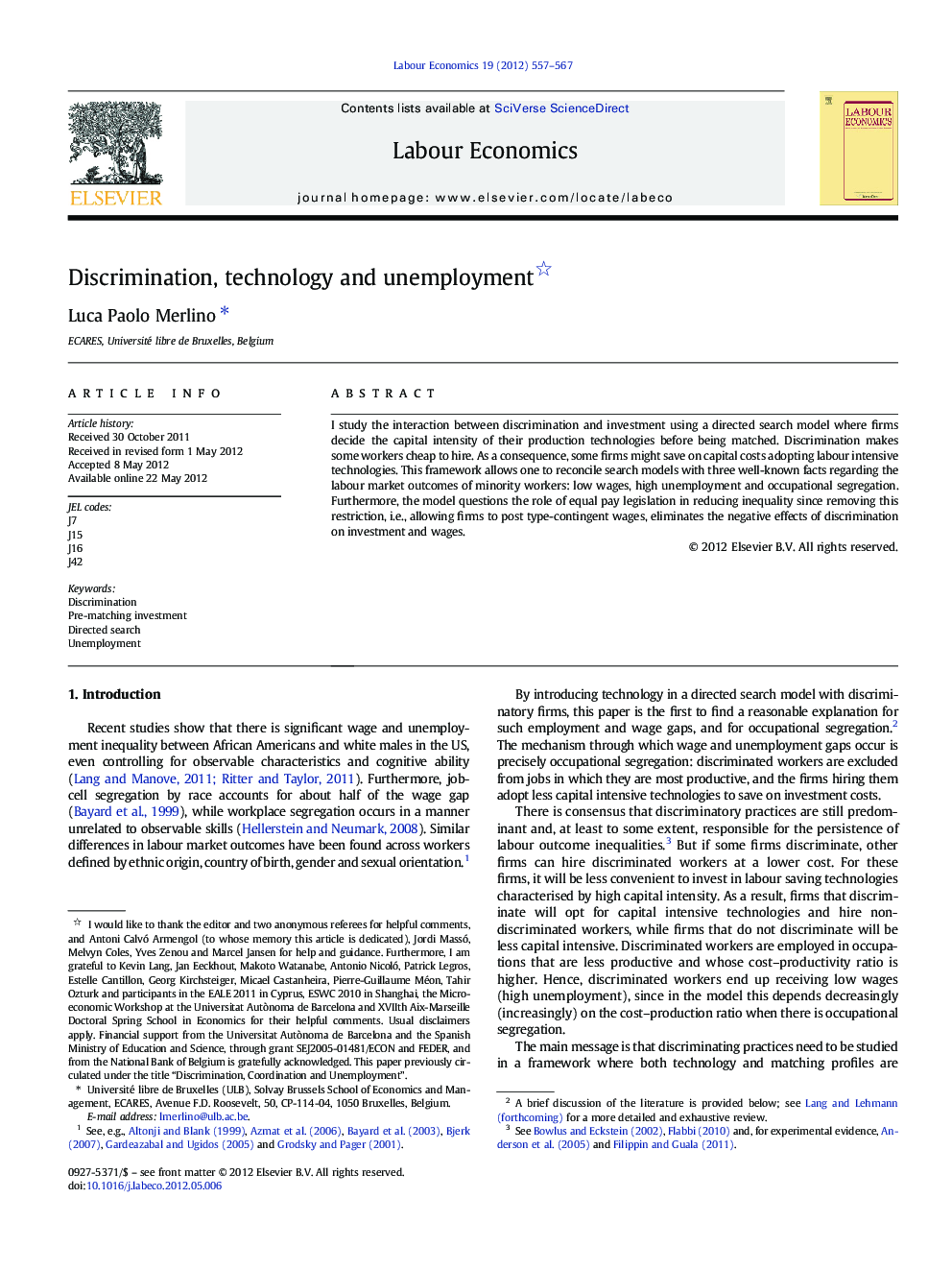| Article ID | Journal | Published Year | Pages | File Type |
|---|---|---|---|---|
| 972740 | Labour Economics | 2012 | 11 Pages |
I study the interaction between discrimination and investment using a directed search model where firms decide the capital intensity of their production technologies before being matched. Discrimination makes some workers cheap to hire. As a consequence, some firms might save on capital costs adopting labour intensive technologies. This framework allows one to reconcile search models with three well-known facts regarding the labour market outcomes of minority workers: low wages, high unemployment and occupational segregation. Furthermore, the model questions the role of equal pay legislation in reducing inequality since removing this restriction, i.e., allowing firms to post type-contingent wages, eliminates the negative effects of discrimination on investment and wages.
Graphical abstractFigure optionsDownload full-size imageDownload as PowerPoint slideHighlights► If some firms discriminate, discriminated workers can be employed at a lower cost. ► Non-discriminating firms will choose less capital intensive technologies. ► Contrarily to previous research, realistic unemployment and wage gaps are obtained. ► Discrimination has no negative effects if equal opportunity legislations are removed.
